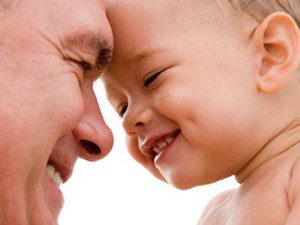June 5, 2019
Talking and reading to babies in their first year can provide learning benefits
that are seen as much as five years later.
Developmental psychologists say the benefits are particularly associated with naming things in the infant’s world, as this can help the infant make connections between what they see and hear.
“Learning in infancy between the ages of six to nine months lays a foundation for learning later in childhood,” said Lisa Scott, Ph.D., and colleagues at the University of Massachusetts Amherst. “Infants learn labels for people and things at a very early age. Labeling helps them recognize people and objects individually and helps them decide how detailed their understanding of the object or face needs to be.”
Scott’s research, conducted with University of Massachusetts Amherst psychological and brain science doctoral students Hillary Hadley and Charisse Pickron, are found in the journal Developmental Science. Scott’s earlier experiments and work by others shows that before they are six months old, babies can easily tell faces apart within familiar (e.g., human faces) and unfamiliar (e.g, monkey faces) groups, but by nine months, they are no longer as good at distinguishing faces outside their own species compared to faces from their own species.
This decline in recognizing unfamiliar individuals is called “perceptual narrowing” and is driven by the infants’ experience interacting with some groups more than others and learning the names of individuals in some groups more than others during the six- to nine-month window.
In an earlier experiment, Scott gave parents picture books to read to their infants in this age range. The books had photos of either different monkey faces or different kinds of strollers. For one group the parents spoke unique names, such as Boris or Fiona, and for the other group the same pictures were all labeled the same, just monkey or stroller. Scott and colleagues measured how long the babies looked at the images, and their neural responses before and afterward. Results for both looking and neural responses suggested that training with individual-level labels led the babies to learn in a way that would allow them to better tell the difference between examples of monkeys or strollers in the future.
An unanswered question was whether the learning seen during the six- to nine-month window would be retained into childhood. To answer this, Scott and her team conducted the current study. They examined response time on a picture-matching task as well as brain responses in the children, now four and five years old, who participated in the earlier study. The researchers also examined response in a control group of children who did not participate in the study.
They found that children trained with individual-level labels showed both behavioral and neural advantages for human faces and not for the images. “These children were faster to match human faces and they exhibited more adult-like neural responses to human faces compared to children who received experience with category labels and children with no book experience,” Scott says.
This suggests that training within individual-level labels in infancy leads to long-lasting learning effects that generalize from the trained images to the more commonly experienced category of human faces. “Even brief experiences can be important for infants, as they are actively building skills that they can use in a variety of contexts later in life,” the author noted.
This study also suggests that naming body parts during massage is good for babies’ brains. Perhaps, alternate between singing/music and naming each body part as a parent begins to massage that area. Parents will also be interested to know that talking and reading to their infants, specifically, naming faces and objects, is actually an important part of the babies’ brain development.
— Vimala McClure




